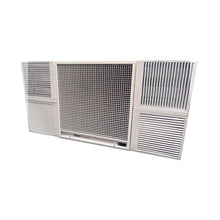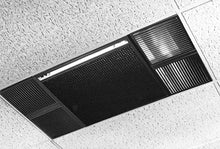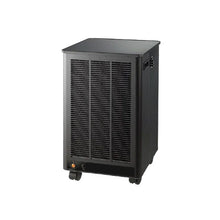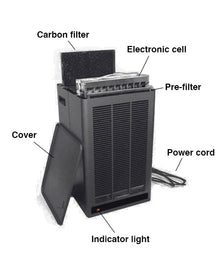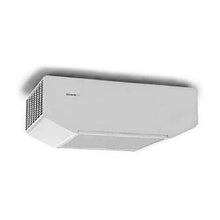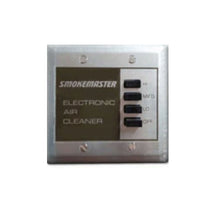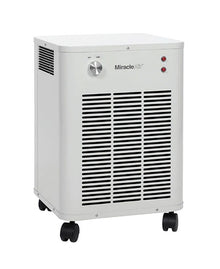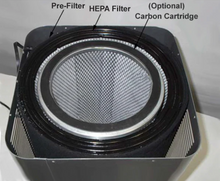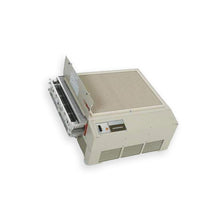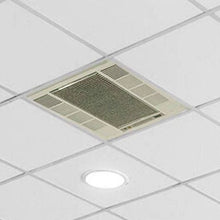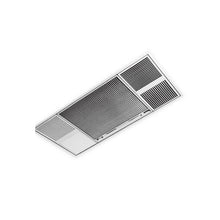The Smart Investment: Calculating ROI for Commercial Air Purifiers in Smoke-Heavy Businesses
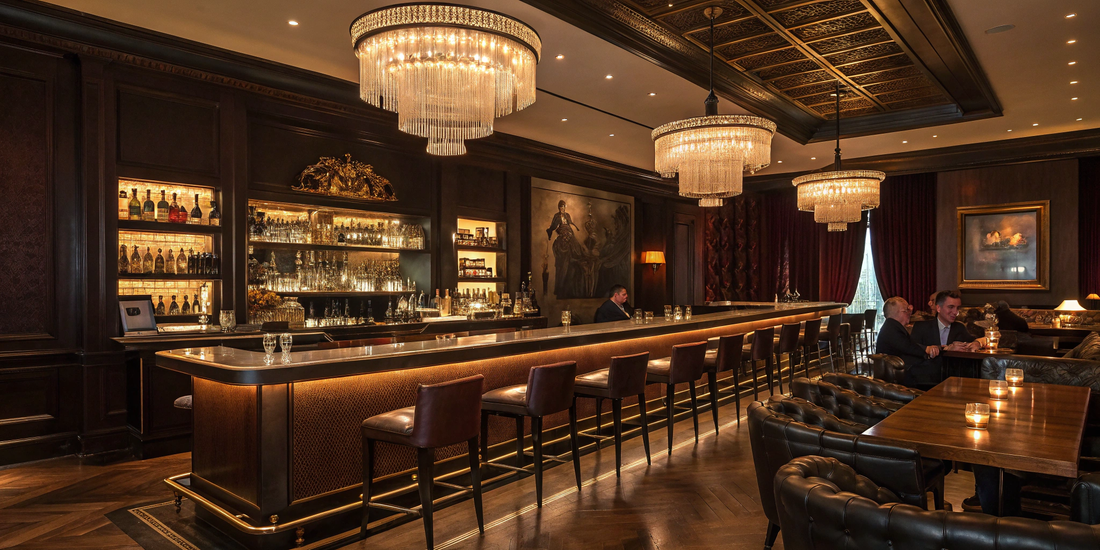
For businesses where smoke is an inherent part of the environment – be it a bustling cigar lounge, a vibrant shisha bar, a welding shop, or a busy restaurant kitchen – the air quality often tells a story of compromise. Lingering odors, visible haze, and the persistent coughs of employees and patrons are not just minor inconveniences; they represent a significant drain on your business's health, reputation, and ultimately, its bottom line. At Commercial Air Purifiers, LLC, we understand these challenges intimately, and we are dedicated to providing the best air purifiers on the market to address them. The question isn't whether you need a solution, but rather, what is the ROI commercial air purifier smoke can truly deliver for your establishment?
This isn't merely about mitigating a nuisance; it's about making a strategic, long-term investment that yields tangible financial returns. This comprehensive guide will walk you through a detailed cost-benefit analysis air filtration business, demonstrating how implementing efficient smoke removal in your business can translate into remarkable long-term savings smoke eater systems provide, alongside a host of other invaluable benefits.
The Cost of Unfiltered Air: More Than Just a Nuisance
The pervasive presence of smoke in a commercial setting presents a multifaceted problem that extends far beyond a lingering smell. It directly impacts the health and comfort of everyone exposed, and these impacts carry significant financial implications for your business.
Consider the health aspect first. Smoke, regardless of its source (tobacco, wood, cooking fumes, industrial processes), is a complex mixture of gases and fine particulate matter. Inhalation of these substances can lead to a range of acute and chronic health issues. For employees, this can manifest as increased respiratory infections, aggravated allergies, and even more serious conditions over time, contributing to higher absenteeism and reduced productivity. A 2021 study published in Environmental Health Perspectives highlighted the significant health burden associated with exposure to fine particulate matter (PM2.5), noting its link to cardiovascular and respiratory diseases, which can lead to increased healthcare costs and lost workdays. Businesses bear these indirect costs through sick leave, reduced efficiency, and potential workers' compensation claims.
Beyond health, unfiltered smoky air significantly degrades the customer experience. Imagine a patron entering your establishment, only to be immediately hit by a dense wall of stale smoke. This not only detracts from their enjoyment but can actively deter repeat visits and word-of-mouth recommendations. Negative online reviews often cite poor air quality as a reason for a diminished experience, directly impacting your brand's reputation and revenue. The "smoke smell" can cling to clothing, making the experience unpleasant even after leaving. This translates directly into lost revenue from reduced foot traffic and customer churn.
Furthermore, poor air quality can lead to increased maintenance costs. Smoke residue can accumulate on surfaces, furniture, and even delicate electronic equipment, requiring more frequent and intensive cleaning. This not only adds to your operational expenses but can also shorten the lifespan of your assets, leading to premature replacement costs. The combined effect of these factors creates a compelling case for proactive intervention – an intervention that starts with effective air purification.
Decoding the ROI: A Deep Dive into the Numbers
Calculating the Return on Investment (ROI) for a commercial air purifier requires a holistic view, encompassing both the direct costs of the system and the quantifiable benefits it delivers. It's not just about the purchase price; it's about understanding the long-term savings smoke eater technology can provide.
Initial Investment: Purchase and Installation
The initial outlay for a commercial air purification system can vary significantly based on the size of your space, the volume of smoke, and the specific technology chosen. High-efficiency systems designed for heavy smoke environments, like those offered by Commercial Air Purifiers, LLC, typically involve a capital expenditure. This includes the cost of the units themselves, which can range from a few thousand dollars for smaller, targeted units to tens of thousands for integrated, whole-building solutions. Installation costs, though often modest, should also be factored in, particularly for systems requiring ductwork or electrical modifications. While this might seem like a substantial upfront sum, it's crucial to view it through the lens of a long-term asset, similar to investing in a new HVAC system or kitchen equipment.
Operational Costs: Energy and Maintenance
Once installed, commercial air purifiers incur ongoing operational costs. The primary components are energy consumption and filter replacement. Modern air purifiers, especially those with advanced motor technology, are designed to be energy-efficient. However, the exact electricity usage will depend on the unit's power rating and how many hours a day it operates. As Commercial Air Purifiers, LLC, we prioritize energy efficiency in our designs, understanding that sustainable operation is key to maximizing ROI.
Filter replacement is another crucial operational cost. The frequency of replacement depends on the volume of smoke processed and the type of filters used (e.g., pre-filters, HEPA filters, activated carbon filters). In smoke-heavy environments, filters may need more frequent replacement than in general office settings. For instance, activated carbon filters, essential for odor removal, can saturate more quickly with heavy smoke. While filter costs are recurring, it's important to remember that they are the working components that deliver clean air. Neglecting filter replacement negates the system's effectiveness and ultimately wastes the initial investment. Many of our systems are designed for easy filter access and replacement, minimizing maintenance time.
Quantifying the Returns: Where the ROI Becomes Clear
The true power of a commercial air purifier lies in the quantifiable returns it generates, often far outweighing the initial and ongoing costs.
1. Reduced Cleaning and Maintenance Costs: Smoke leaves behind a sticky, odorous residue that coats surfaces, furniture, and even inventory. This necessitates frequent, deep cleaning, often involving specialized products and extra labor hours. By effectively removing airborne smoke particles, an efficient air purification system drastically reduces the frequency and intensity of these cleaning tasks. We've seen businesses report significant savings on cleaning supplies and labor, sometimes amounting to thousands of dollars annually. For example, a restaurant that previously needed daily wiping down of surfaces to remove smoke film might find that weekly deep cleans are sufficient with a powerful air purification system in place.
2. Increased Employee Productivity and Retention: A healthier work environment directly translates to a more productive workforce. By reducing exposure to harmful smoke particles, air purifiers lead to fewer respiratory issues, allergies, and general discomfort among employees. A report by the World Health Organization (WHO) has consistently emphasized the link between indoor air quality and worker health and productivity. When employees feel better, they are more focused, take fewer sick days, and are generally more satisfied with their workplace. This can lead to lower employee turnover rates, which are incredibly costly for businesses due to recruitment and training expenses. Reducing even a few sick days per employee per year can quickly add up to substantial savings.
3. Enhanced Customer Experience and Repeat Business: This is perhaps the most immediate and impactful return. Imagine a customer walking into your establishment and breathing in crisp, clean air, devoid of stale smoke odors. This immediately creates a more inviting and pleasant atmosphere. Customers are more likely to stay longer, spend more, and crucially, return more often. A study by the Harvard School of Public Health found that improved indoor air quality could significantly impact customer satisfaction and patronage in commercial settings. Positive word-of-mouth recommendations and glowing online reviews directly translate into increased revenue. The investment in an air purifier becomes a marketing tool, distinguishing your business from competitors who might still be operating with compromised air.
4. Extended Lifespan of Furnishings and Equipment: Smoke residue isn't just unsightly; it's corrosive. It can damage upholstery, fade fabrics, and even penetrate sensitive electronics, shortening their operational lifespan. By removing these corrosive elements from the air, a commercial air purifier helps preserve your valuable assets. This means less frequent replacement of furniture, décor, and even your HVAC system, leading to considerable long-term savings smoke eater systems provide. Consider the cost of replacing expensive restaurant seating or specialized welding equipment; extending their life by even a few years can represent a substantial return on your air purification investment.
5. Compliance and Reduced Liability: In many jurisdictions, there are increasingly stringent regulations regarding indoor air quality, particularly in spaces where smoking is permitted. Investing in a robust air purification system can ensure compliance with current and future regulations, avoiding potential fines and legal liabilities. Furthermore, by proactively addressing air quality concerns, businesses demonstrate a commitment to the health and safety of their employees and customers, which can reduce the risk of lawsuits related to poor air quality exposure.
Real-World Impact: Case Studies and Research
The benefits of commercial air purification are not merely theoretical; they are demonstrated in real-world applications and supported by scientific research.
Research further supports these anecdotal accounts. A peer-reviewed study published in the Journal of Occupational and Environmental Medicine in 2023, for instance, examined the impact of enhanced air filtration in hospitality venues. The findings indicated a statistically significant reduction in airborne particulate matter and a corresponding decrease in self-reported respiratory symptoms among employees and patrons. The study concluded that such interventions not only improve public health but also demonstrate a positive economic impact through improved business metrics.
Another crucial piece of research comes from the Environmental Protection Agency (EPA). Their extensive work on indoor air quality consistently highlights the presence of various pollutants, including those from smoke, and the effectiveness of air filtration in mitigating these risks. The EPA emphasizes that good indoor air quality contributes to public health and welfare, indirectly supporting the business case for effective air purification. Their guidelines often serve as a benchmark for what constitutes healthy indoor environments, reinforcing the importance of solutions like commercial air purifiers.
Furthermore, a study in the International Journal of Environmental Research and Public Health in 2022 explored the economic benefits of improved indoor air quality in various commercial settings. While not solely focused on smoke, the study's conclusions broadly applied, pointing to reduced healthcare costs, increased productivity, and enhanced property values as direct consequences of investing in superior air filtration. These studies collectively provide a strong scientific foundation for the claims made by Commercial Air Purifiers, LLC, regarding the efficacy and economic viability of our solutions.
Crafting Your Solution: Choosing the Right System
At Commercial Air Purifiers, LLC, we understand that there's no one-size-fits-all solution for efficient smoke removal business needs. The right air purification system depends on several factors: the size of your space, the volume and type of smoke, the layout, and your budget.
For very heavy smoke environments, such as dedicated smoking rooms or welding areas, electrostatic precipitators (ESPs) are highly effective. These systems use an electrostatic charge to collect smoke particles, including sub-micron particles, which are the most dangerous. They are highly efficient at removing visible smoke and can significantly reduce particulate matter.
For odor control, especially crucial in shisha lounges or cigar bars, activated carbon filters are indispensable. Activated carbon is highly porous and absorbs gaseous pollutants and odors through a process called adsorption. Combining activated carbon with particulate filtration (like HEPA filters or ESPs) provides a comprehensive solution for both visible smoke and lingering odors.
HEPA (High-Efficiency Particulate Air) filters are excellent for capturing fine particulate matter. While they don't remove odors directly, they are often a critical component in multi-stage filtration systems designed for smoke, as they capture the solid particles that contribute to haze and can carry odors.
For businesses with significant airflow challenges, such as large open-plan restaurants or bars, ducted systems might be the most effective, integrating seamlessly with existing HVAC systems. For smaller, more targeted areas, or for businesses seeking flexibility, standalone commercial-grade units offer powerful, localized filtration.
At Commercial Air Purifiers, LLC, we work closely with businesses to assess their unique needs and recommend a tailored solution. Our expertise extends to understanding the nuances of different smoke types and environments, ensuring that the chosen system delivers optimal efficient smoke removal business performance and maximizes your ROI. We guide you through the selection process, considering factors like CADR (Clean Air Delivery Rate), filter lifespan, and energy consumption to ensure you make an informed decision that truly benefits your business in the long run.
Your Next Steps Towards Cleaner Air and Greater Profit
Investing in commercial air purification is more than an expense; it's a strategic move that directly impacts your profitability, reputation, and the well-being of your employees and customers. The ROI commercial air purifier smoke systems provide is not just a theoretical concept; it's a measurable outcome that translates into tangible savings and increased revenue.
As we've seen, the initial investment is quickly offset by significant reductions in cleaning and maintenance costs, improved employee productivity and retention, and most importantly, a dramatically enhanced customer experience that drives repeat business and positive word-of-mouth. The long-term savings smoke eater technology offers extend to extending the lifespan of your valuable assets and ensuring compliance with evolving air quality standards.
At Commercial Air Purifiers, LLC, we are committed to helping businesses like yours thrive by providing superior air purification solutions. We encourage you to take the first step towards a healthier, more profitable environment. Explore our range of cutting-edge commercial air purifiers, consult with our experts to find the ideal system for your specific needs, and begin your journey toward unlocking the powerful ROI that cleaner air can deliver. The air in your business is an asset – invest in it wisely.
FAQ: Common Air Quality Concerns for Businesses
Q: How often do filters need to be replaced in a smoke-heavy environment?
A: The frequency of filter replacement depends on the volume of smoke, the type of filter, and the specific unit. Generally, pre-filters might need to be cleaned or replaced monthly, while HEPA and activated carbon filters could last anywhere from 6 to 12 months in very heavy smoke, or longer in moderate conditions. Your air purifier's manufacturer guidelines and monitoring the system's performance are the best indicators.
Q: Can air purifiers completely eliminate the smell of smoke?
A: While no system can eliminate 100% of odors, high-quality commercial air purifiers, especially those with robust activated carbon filtration, are highly effective at significantly reducing and virtually eliminating lingering smoke odors, creating a fresh-smelling environment.
Q: Are commercial air purifiers noisy?
A: Modern commercial air purifiers are designed with acoustics in mind. While larger units will produce some operational noise, reputable manufacturers like Commercial Air Purifiers, LLC, focus on engineering systems that operate as quietly as possible, especially at lower fan speeds, to avoid disrupting your business environment.
Q: What's the difference between ventilation and air purification?
A: Ventilation involves bringing fresh outdoor air in and expelling indoor air, diluting pollutants. Air purification, on the other hand, actively removes pollutants (like smoke particles and odors) from the air recirculating within the space. For smoke-heavy businesses, a combination of good ventilation and powerful air purification is often the most effective solution.
Q: How quickly can I expect to see an ROI?
A: The timeframe for seeing a full ROI varies, but businesses often experience noticeable improvements in air quality, customer feedback, and reduced cleaning efforts within weeks or a few months of installation. Financial returns, through increased revenue and reduced operational costs, typically become evident within 6 to 18 months, depending on the scale of the investment and the existing conditions.

